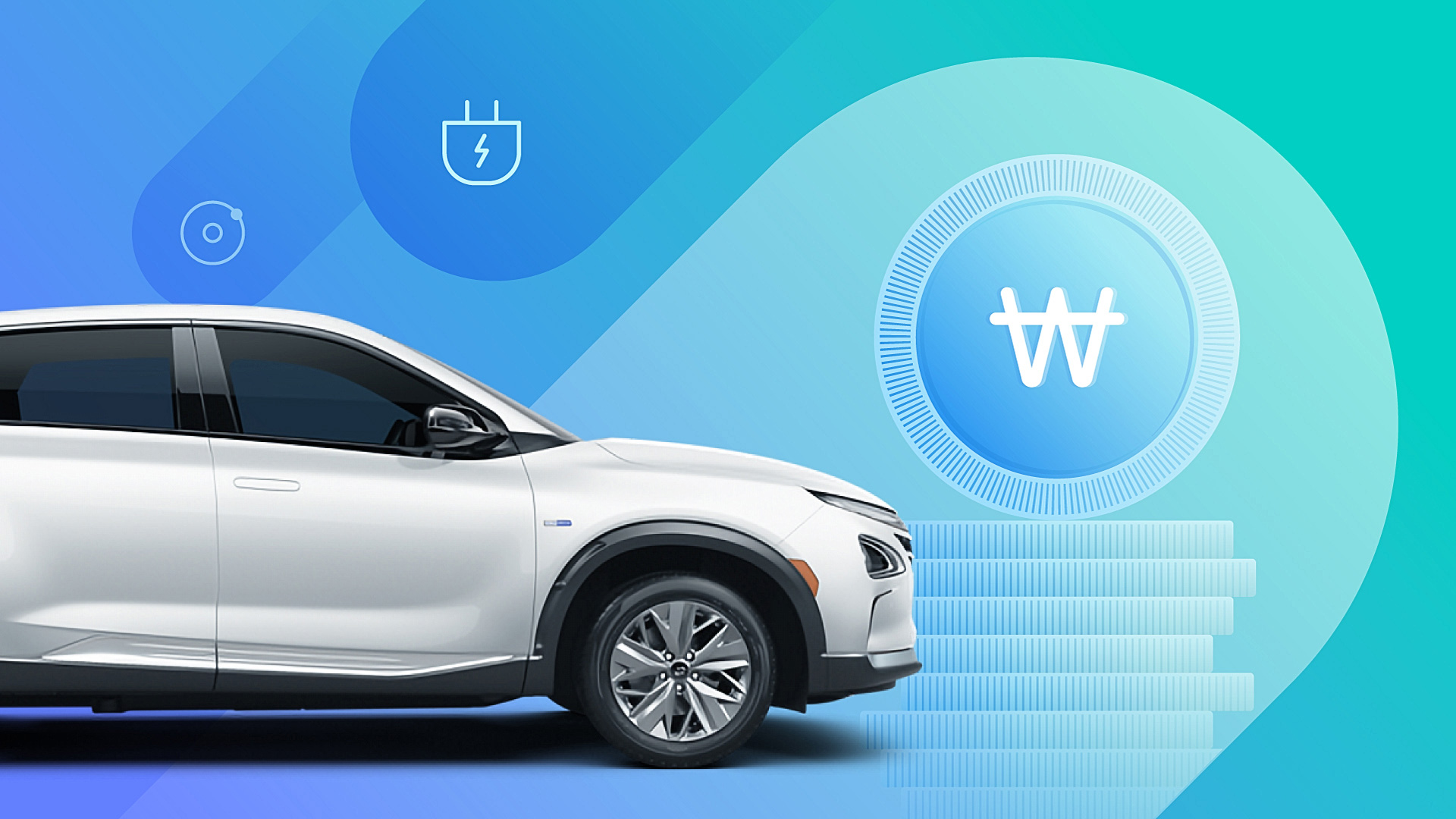
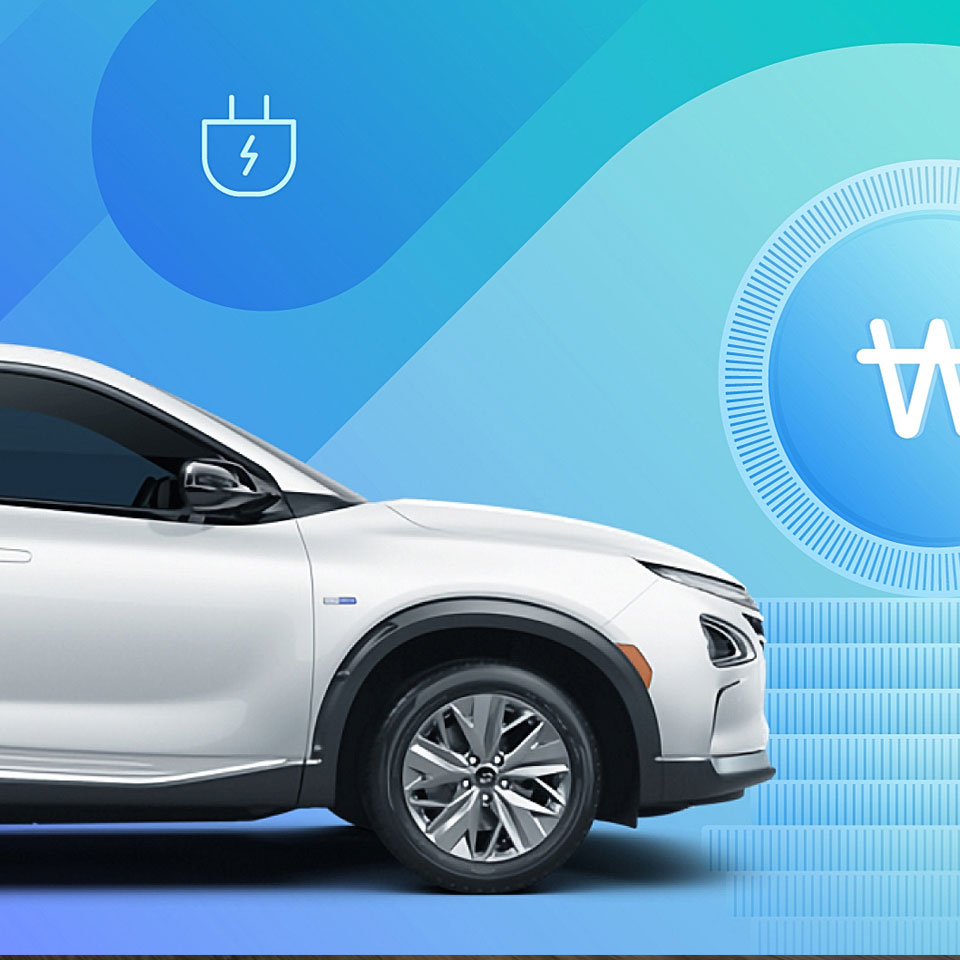


Recently, the government re-announced the subsidy scheme for eco-friendly vehicles such as electric vehicles and fuel cell electric vehicles. Here's how the reorganized subsidy system in 2021 changed to improve the performance and air environment, compared to last year.
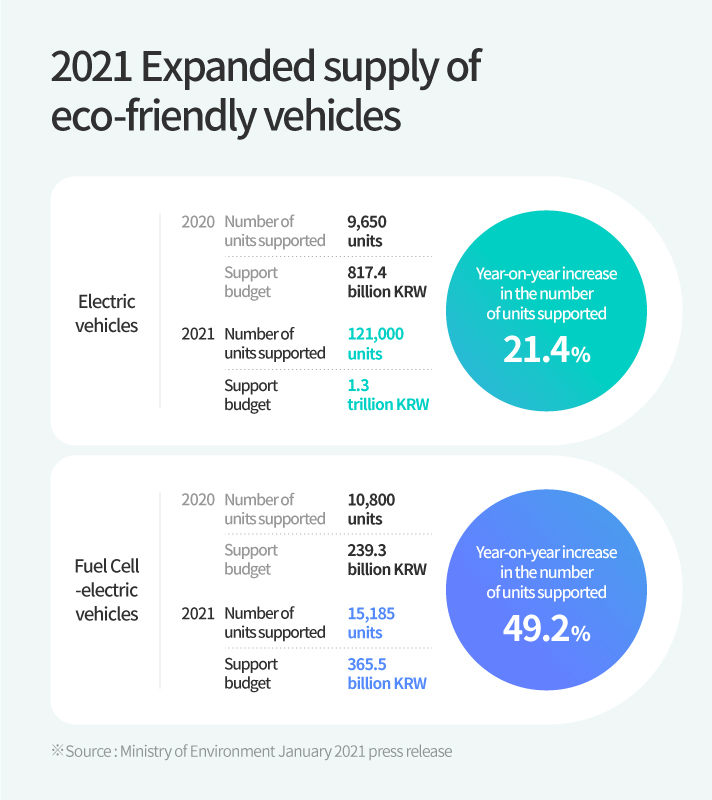
One of the biggest changes in the subsidy system for eco-friendly vehicles this year is that the budget is greatly increased to support more eco-friendly cars. The government has increased the number of eco-friendly vehicles supported every year, but last year, it paid purchase subsidies to 9,650 electric vehicles and 11,180 fuel cell electric vehicles. The number of subsidies for electric vehicles this year increased 21.4% to 121,000 units from the previous year, and the number of subsidies for fuel cell electric vehicles also increased by 49.2% to 15,185 units.
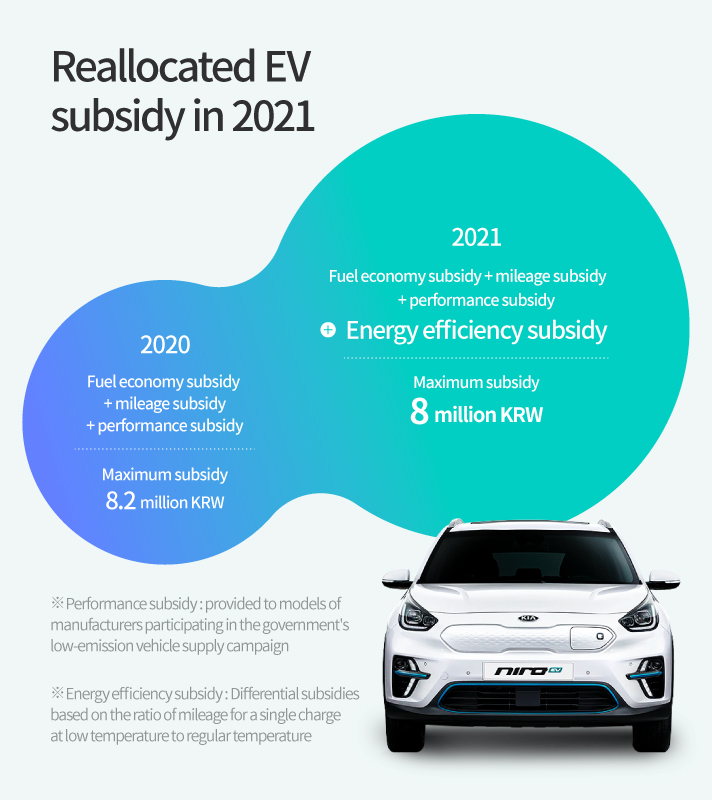
This year, the government subsidy for electric vehicles was up to 8 million won, down 200,000 won from last year. Specifically, support for high-performance, high-efficiency electric vehicles was strengthened to promote such electric vehicles with higher eco-friendliness. The proportion of fuel economy subsidies has been increased from 50% to 60%, and support for electric vehicles featuring great fuel economy in cold temperatures has also been strengthened. Evaluation of driving performance in lower temperatures has been included in the fuel economy subsidy standard last year to give additional benefits, but from this year, the system was improved so that the maximum subsidy can be received only when the driving performance in low temperatures is excellent by separating the evaluation from energy efficiency subsidy. This policy induces electric vehicle manufacturers to improve fuel economy in winter when developing electric vehicles.
The number of electric cars that receive the maximum subsidy has also significantly decreased due to the changes in the subsidy system. In the case of last year, most of the electric vehicles with great fuel economy and mileage were able to receive the maximum subsidy, but from this year, things got trickier because of the reallocation of energy efficiency subsidy separated from the winter performance subsidy. Among the electric car models currently on the market, only Hyundai's Kona Electric basic type and Niro EV equipped with a heat pump option are the only models that can get the maximum subsidy. For the next-generation electric vehicles to be released this year, such as Hyundai Ioniq 5 and Kia CV, subsidies will vary according to the performance and price after launch.
For reference, the government is not paying subsidies for electric vehicles that are featuring poorer driving performance in low temperatures than the government standard. In this year, it is necessary to achieve a low-temperature mileage of 65% or more of the room-temperature mileage to be eligible for subsidies for electric vehicles. For example, for an electric car with a single charge mileage of 500km at room temperature, it must travel 325km or longer in cold weather (-5~-15℃).
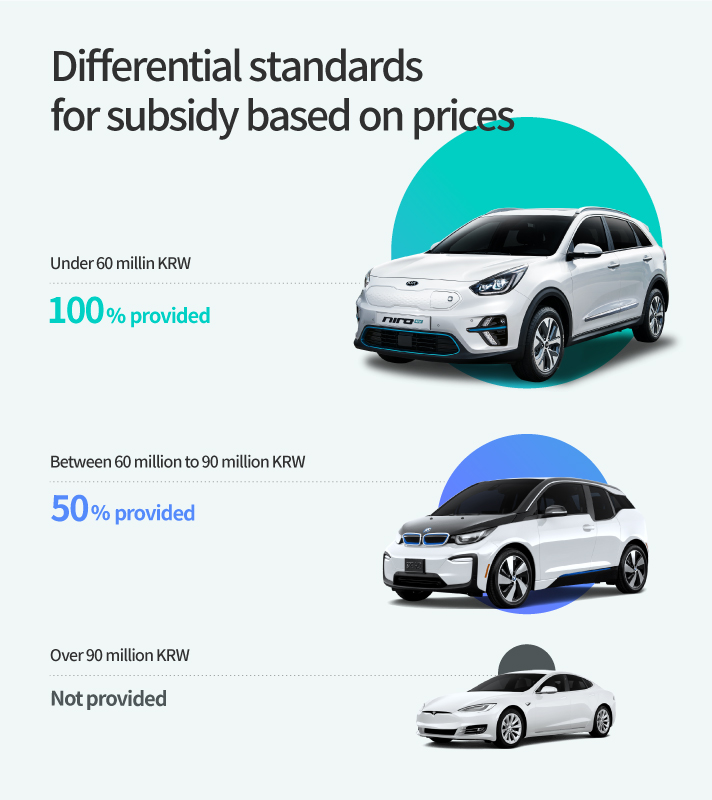
Another big change in the subsidies for electric vehicles is that the subsidies are applied differentially according to the consumer price. The electric vehicles that cost less than 60 million KRW may get 100% of the subsidy according to the subsidy calculation; but for the electric vehicles that cost between 60 million KRW and 90 million KRW, only 50% of the maximum subsidy. And the electric vehicles that cost over 90 million KRW cannot get the subsidy at all. For example, Kia's Niro EV, which costs less than 60 million won, can receive a government subsidy of 8 million KRW, but BMW's i3 (120Ah), which costs more than 60 million KRW, can get 3,410,000 KRW, which is 50% of the subsidy. In addition, Tesla's Model S, which costs more than 90 million KRW, cannot receive subsidies.
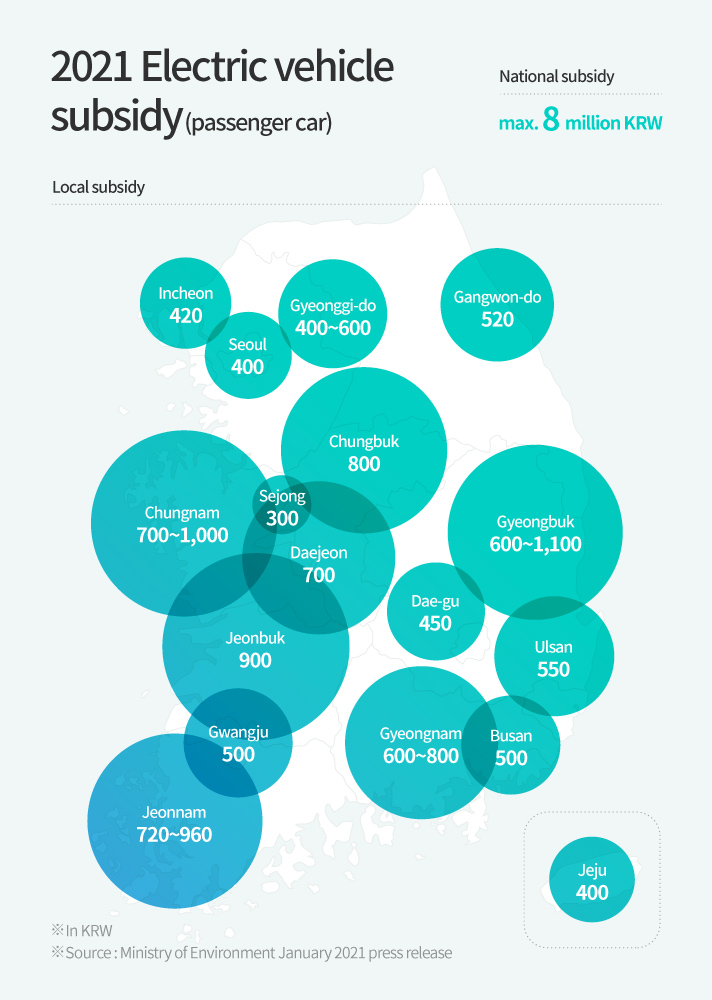
The change in the central government subsidy system is also linked to subsidies that local governments provide. Local subsidies until last year were the same amount regardless of vehicle type, but this year, they are paid differentially based on the central government subsidies.
For example, when Seoul citizens purchase a Kia Niro EV, the consumer purchases the Niro EV, which can get the maximum amount of government subsidies (8 million KRW), so the local subsidy is also 4 million KRW, hence the total subsidy of 12 million KRW. In the case of BMW i3, on the other hand, the subsidy is 5.11 million KRW - the government subsidy of 3.41 million KRW plus the local government subsidy of about 1.7 million won (the maximum central government subsidy (8M KRW) divided by local government subsidy times local subsidy). Also, electric vehicles that cost more than 90 million KRW cannot receive local subsidies at all.
The government expects that the introduction of a policy for differentiated subsidies for each electric vehicle price will lead to a reduction in electric vehicle prices and more popular entry-level models, hence accelerating the popularization of electric vehicles.
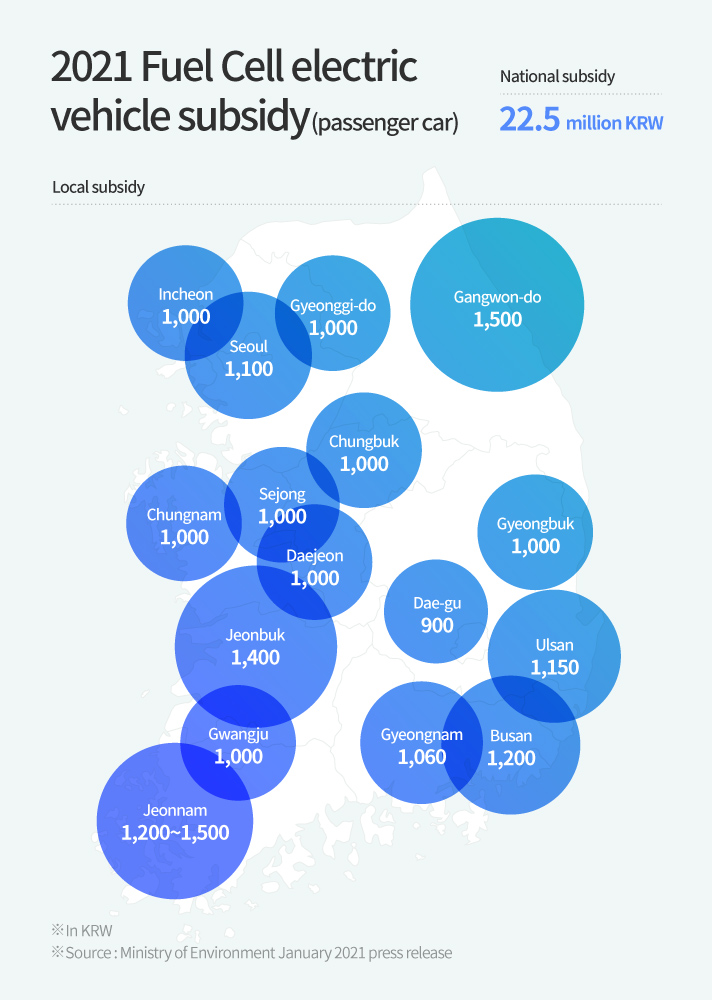
The government subsidy for fuel cell electric vehicles was 22.5 million KRW, the same as last year. Subsidies paid by local governments range from a minimum of 9 million KRW to a maximum of 15 million KRW. Currently, Hyundai's Nexo is the only fuel cell electric vehicles sold in Korea. Nexo buyers can receive subsidies ranging from a minimum of 31.5 million KRW to a maximum of 37.5 million KRW, depending on the region.
One notable part of the subsidy policy related to fuel cell electric vehicles is the government allocated additional subsidies for hydrogen charging station operators to expand infrastructure. This year, in order to help operate hydrogen charging stations, the government will directly subsidize some of the hydrogen fuel purchase costs to charging stations with a deficit. The support amount is calculated as 70% of the difference between the purchase price of hydrogen fuel and the standard unit price at the level at which the business operator can achieve the break-even point. In other words, by directly supporting a portion of the amount required to purchase hydrogen, the government guarantees profit by reducing the operating cost of the hydrogen charging station. In addition, a policy to support at least 70 million KRW per station was planned for businesses with low sales. However, the amount of support will not exceed 80% of the total deficit, making the companies induce self-help efforts.
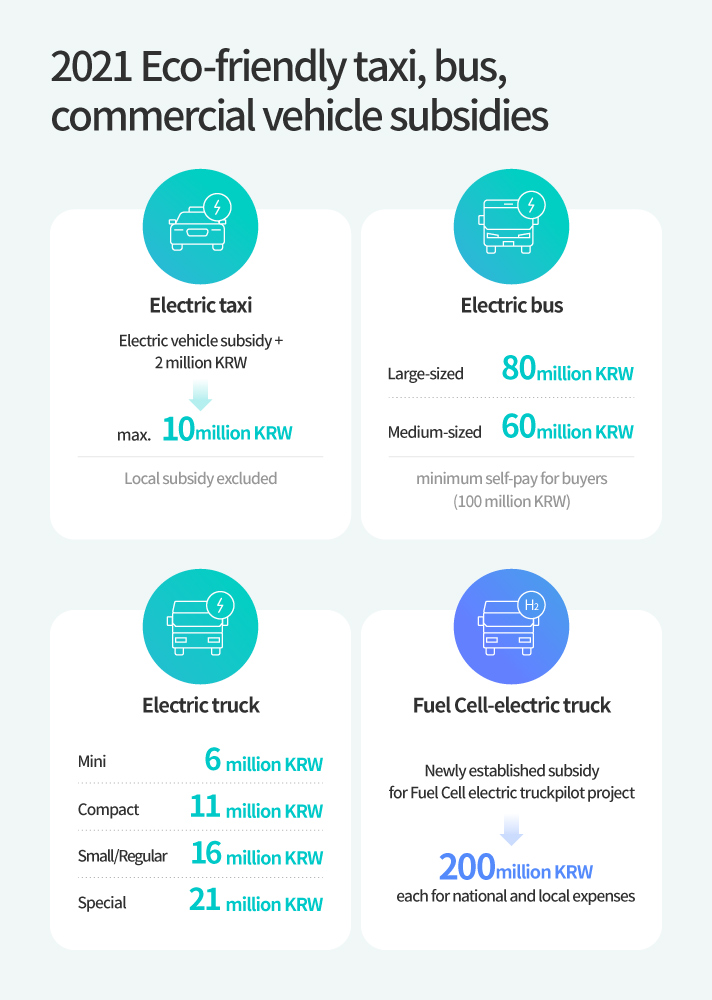
The government will also induce public transportation and commercial vehicles to replace with eco-friendly vehicles, whose long driving distances can affect the air environment. In addition to the maximum subsidy (8 million KRW) that private electric vehicles can receive, electric taxis can get an additional 2 million KRW, 80 million KRW for large-size electric buses, and 60 million KRW for medium-size buses. However, in the case of electric buses, a minimum self-pay for the buyers was set to prevent indiscriminate support to some businesses.
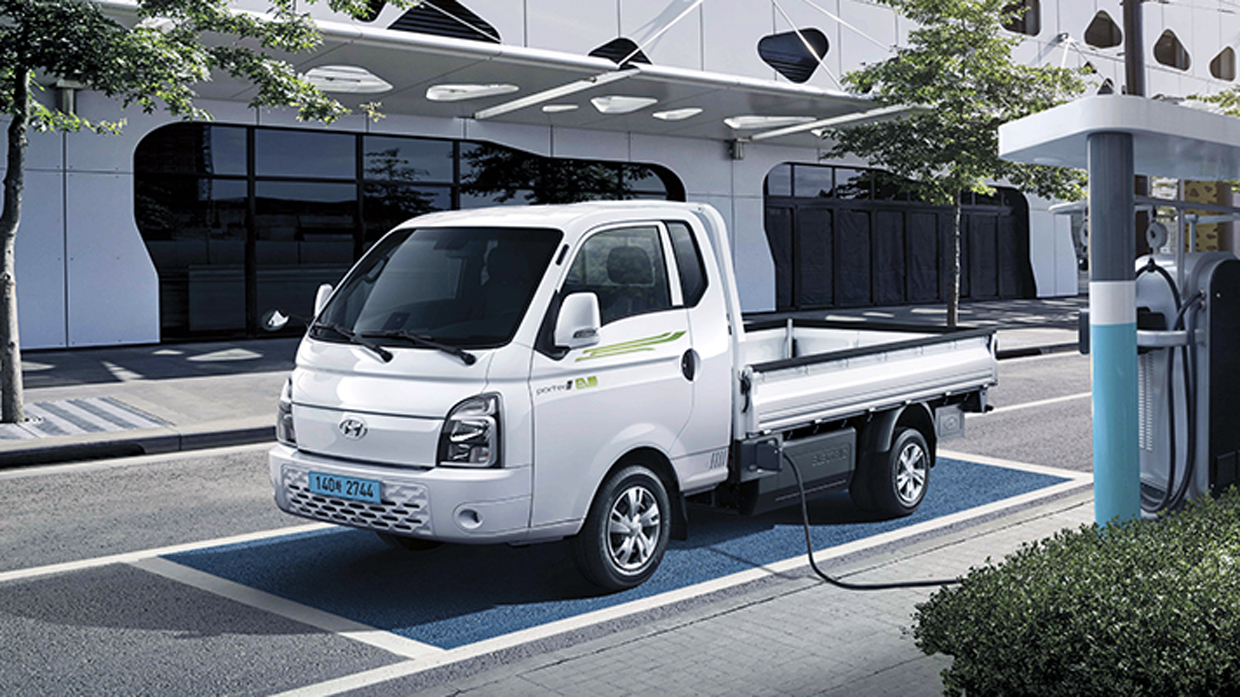
In addition to public transportation such as taxis and buses, subsidies for electric vans, which small and medium-sized enterprises need, have also increased from last year. The electric truck subsidies for small and medium-sized enterprises are allocated separately, and it is expected to benefit not only individual businesses but also small and medium-sized businesses considering purchasing electric trucks. Subsidies for the fuel cell electric truck pilot program were also newly established this year. The world is paying more attention to fuel cell electric commercial vehicles than any other eco-friendly commercial vehicles for their efficiency and economy. The government plans to take the lead in the commercialization of fuel cell electric trucks by providing subsidies of 200 million KRW each to national and local expenses for the fuel cell electric truck pilot program.
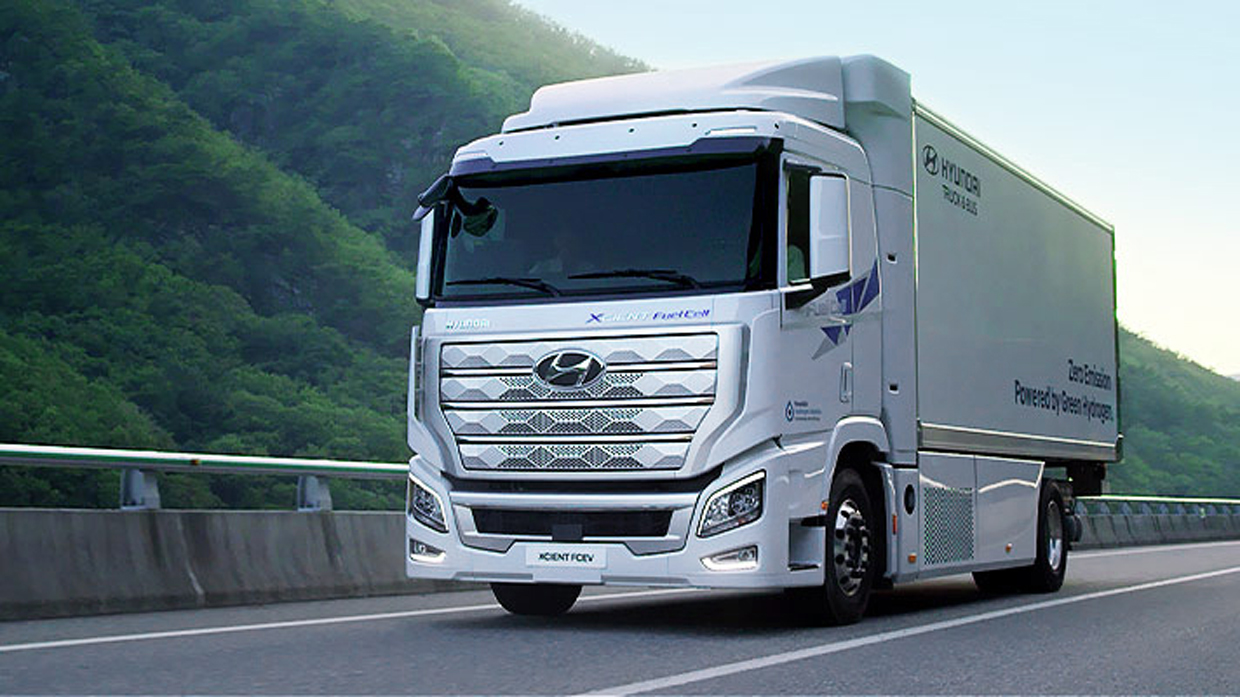
Through the newly reallocated eco-friendly vehicle subsidy in 2021, the government announced, “We plan to achieve the popularization of eco-friendly cars and carbon neutrality in the transportation sector at an early stage,” and they added, “We plan to operate the subsidy system in the future in response to changes in market conditions and demand.” In order to receive electric and fuel cell electric vehicle subsidies, check the public announcement of the local government's supply business, visit dealerships, fill out the vehicle purchase support application and contract, and then submit the application forms.
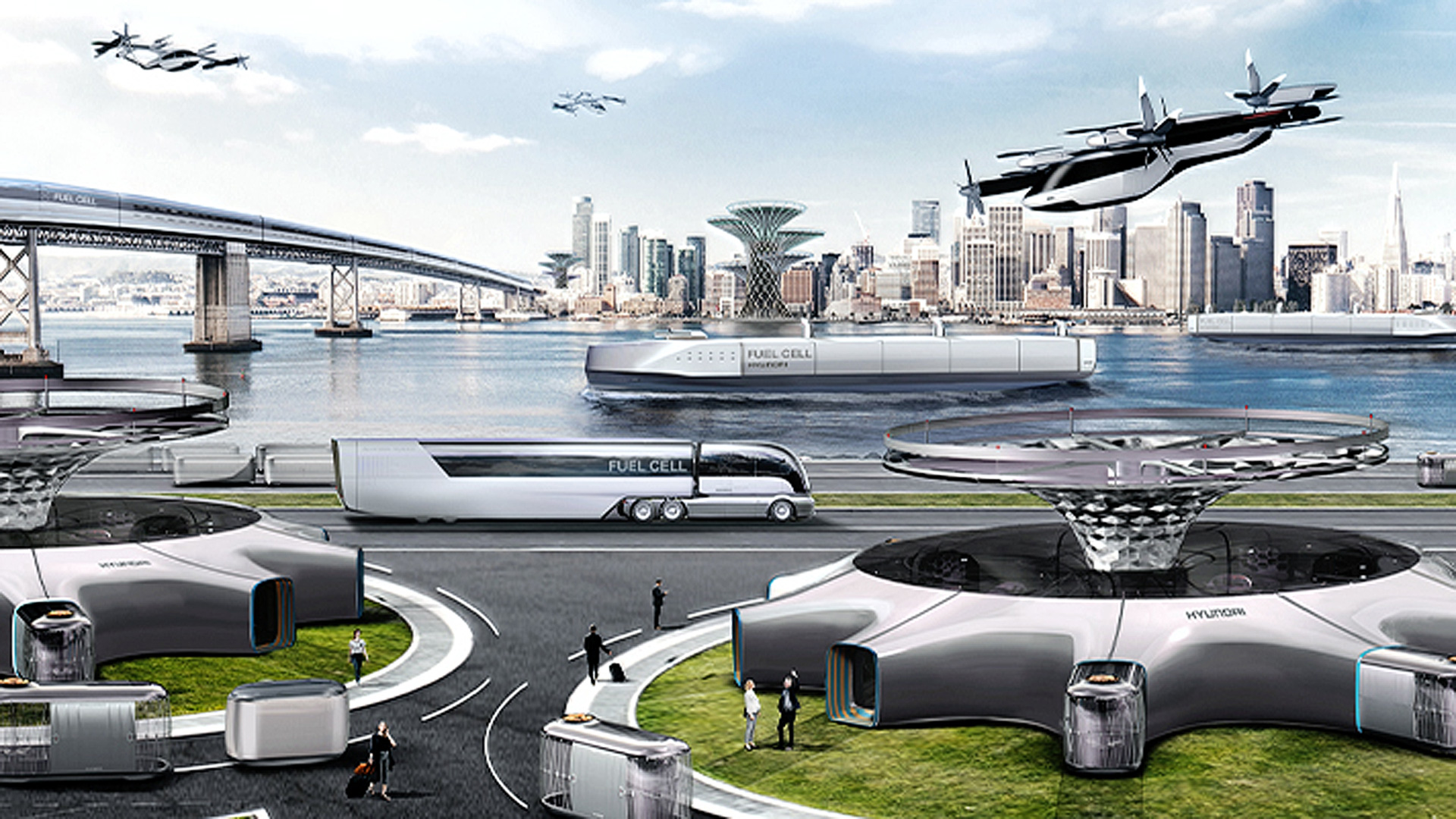
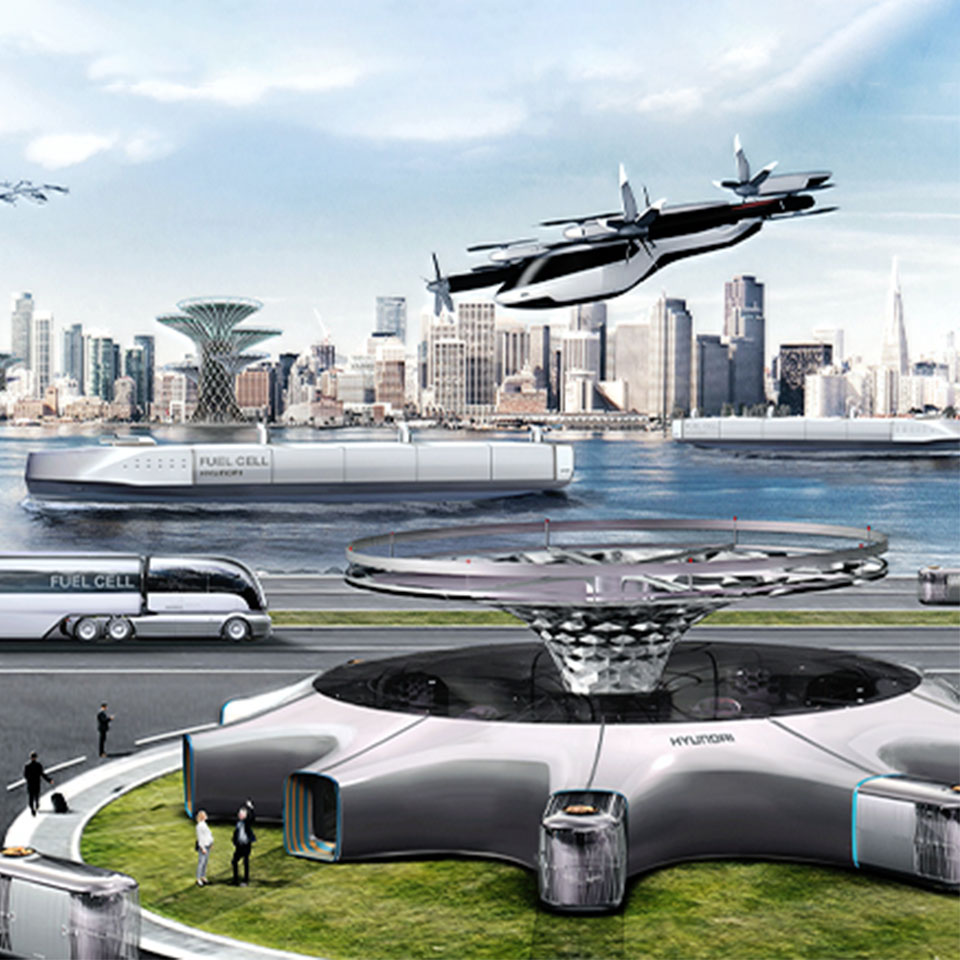
[Vision for Hydrogen: Part 3] Hydrogen Infrastructure
2021.05.13 7min read